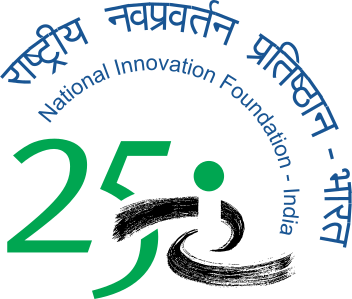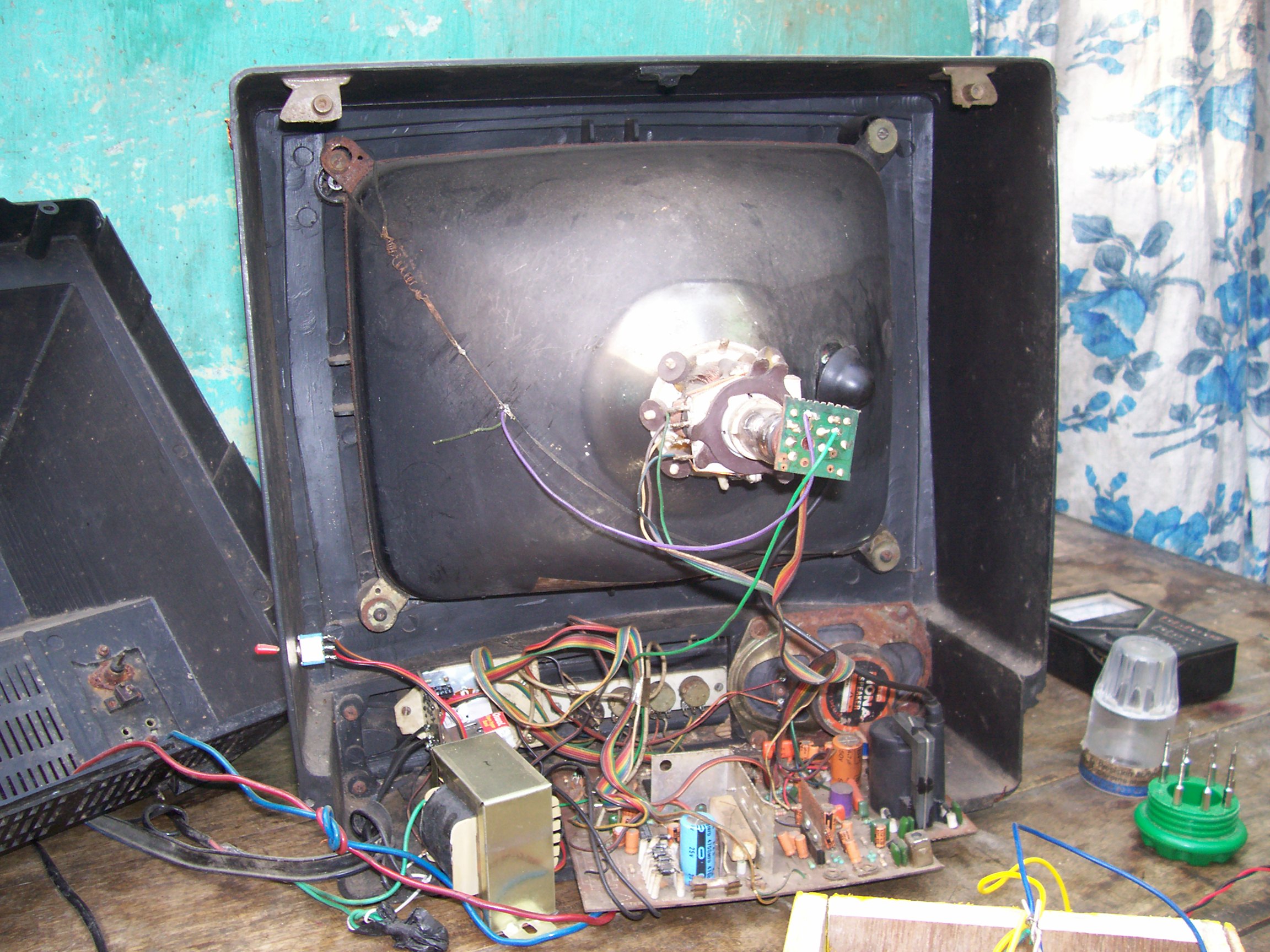Picture tube charger, rat trapping machine, and many other ideas
Pratyek vyakti vaigyanik hai aur uski pratham khoj hai apane bhitar chhupe guno ko khojana, nikharana
(Every person is a researcher in himself and his first job is to discover his hidden talents)
A serial innovator, a teacher, a writer, an artist, a poet, a singer, a lyricist, Meraj Ahmed (23) is a man with multiple talents. Among the numerous things that he has made, a few interesting ones are black and white picture tube charger, rat capturing device, and magnetic weighing balance.
Originally hailing from Gopalganj, Meraj’s family shifted to Bettiah in 1990 due to his father’s transfer. His father works as a clerk in Sikata block of
Due to the financial crunch, Meraj had to start earning early. He was good in studies and as a routine always got over 95 per cent marks in physics, chemistry and mathematics. He started giving tuitions to the children of his own class when he was in class nine. He did this for three years and completed intermediate in 2004. He then took admission in graduation but could not continue due to the dwindling finances. All the while, he supported his family, paid for his siblings’ education and also found time and energy for his other creative pursuits.
In 2005, Meraj rented a room to start his tuition center. He named it Spenin Institute after an award that he got in Ranchi the same year. Teaching maths and science to students upto class twelve, he is able to earn Rs 4000- 5000 per month. He recalls an incidence before his matric exam when he needed Rs 550 to fill up the form. With no money in his hand, he was forced to ask for some money from his parents. But, they did not support him. Dejected, he lost the hope of appearing in the exams and felt he would never be able to study again in life. But just on the last day, one of his students gave him the money to fill the form. He then decided to continue his studies along with the tuition classes.
He always had a special liking for science and maths. In his free time, he likes reading biographies of scientists as their life motivates him to do better. Apart from science, he has great affinity towards literature as well. The first story he wrote was when he was in class seven. It won him an award in a competition. He has never looked back since then, and has published in over 150 magazines and newspapers. He has won numerous awards in science exhibitions, essays, poetry and story writing, and drawing competitions not only in Bihar but in different states. He has also penned songs for a few regional films and made three music albums of Bhojpuri songs.
He came in touch with NIF through Azhar Hussain Ansari who saw the circuit of one of his work in a magazine and motivated him to submit his entries.
Working on the picture charger
Somewhere in 2003, the picture quality of his second hand black & white television became very poor. The display became unclear and there was a lot of snow. He thought about purchasing another picture tube, but it costed Rs. 800, which was beyond his reach. He considered recharging the picture tube through conventional means, which could be done by any electrician. But his elder brother advised him not to use the method as it might have damaged the picture tube beyond repair. Also the charge did not last more than ten days.
‘Can there be another way?’ he thought. He started studying his brother’s electronics books, at times discussed with him. As he was very good in science, it did not take him much time to understand the basics. He prepared a circuit to charge the television and theoretically discussed its feasibility. When he was sure about the success, he experimented on his television set in 2005. The television set, needless to say, is still working fine in 2009.
While working he had some financial problems procuring some of the components but he managed somehow using waste electronic parts with him and his brother. The first prototype of the picture tube charger was made of these waste materials and was successfully tested on his television. In the first prototype he used a 15 watt bulb. Working on improving the charger, he reduced the size to almost half in the second prototype and replaced the bulb with a fuse. The breakage of the fuse signals that the picture tube has charged. Meraj mentions that it took him three months and an investment of about Rs. 3000 to develop the first prototype but he can now make the same in half an hour spending only Rs. 100. He has made three of such picture tube chargers till date. NIF also helped him with a sum of Rs. 5000 to develop this picture charger during the 22nd Shodh Yatra in Motihari in January 2009.
The picture tube charger
Meraj has developed a device, which can charge the picture tube of a black and white television, when the display becomes unclear and snowy.
The charging device consists of a transformer, a bell switch, two switches, CRT (Cathode Ray Tube) base and a bulb. Before starting, all wire connections of the picture tube are removed. The CRT base of device is connected to the CRT pin of the picture tube and 220 volt AC is given to it. There is a transformer inside the device, which supplies 12 V DC output. There is a bell switch, which is pressed frequently till the attached bulb glows fully. A bulb signals that the picture tube has been charged completely. Meraj has been using 100W bulb but any bulb can be used.
For making the charging device durable, Meraj has incorporated a resistance, a bridge rectifier, and a condenser so that limited voltage can be supplied. This protects the picture tube’s filament from damage and also the charging lasts longer.
This operation of this device is so simple that even a small boy can charge the picture tube and that too in two minutes. The life of picture tubes charged this way gets extended by another few years. This device can be used to charge black and white picture tubes of all sizes and types.
The patent for the device has been filed by NIF. Though the demand of black and white televisions has taken a beating in recent times but still many local companies are thriving by selling black and white televisions mostly to the rural consumers. Such a picture charger gives an option for people like Meraj, who cannot afford to buy a new picture tube or a television, to revitalise their television sets. In patent literature, there are many instances available about various apparatus that can be used to charge a photoconductive layer disposed on a conductive layer (US 5083959, US 5132188) or electro-photographically manufacture a luminescent screen assembly on an interior surface of a CRT (US 4921767). However, the charging apparatus of Meraj was found to be simple, uncomplicated and affordable.
The rat trapping machine
Meraj has developed a machine, which captures the rat. It may sound common but this one is a bit different. It has an electric circuit that gives an alarm when the rat gets caught.
It is an electronic machine of dimension 6.5”x 10” x 12”. It works on 4 cells of 6V each and weighs almost two kg. The cubical body of machine is made of wood, one side of which is the entry for the rat. Inside the box, on the opposite end, is an iron plate, which is connected to one end of a circuit. To the other end is connected a metallic flap, which is located just above the iron plate. A piece of bread is kept between the plate and the flap. When the rat pulls the bread then metallic flap falls on the plate and the circuit gets completed resulting in the alarm and closing of the entrance of the rat trap.
The path for the rat inside the trap is zig-zag so even if it wants to run fast, it cannot escape before the entrance closes. There are three switches of the machine viz. main switch for power, the trap switch and the release switch. Keeping the main switch off, bread is put between the iron plate and the metallic flap and the entrance is left open. The main switch is then switched on and the device put in the trap mode by switching on the trap switch. When the rat gets trapped and has to be released, the release switch is switched on, which opens the entrance and the rat can then run out. The battery is used only when the rat pulls the bread and hence need not be replaced soon.
Meraj spent about a week developing this device and now can replicate it in an hour’s time. Using sun mica, it can be made at a cost of Rs. 150 while using steel; he estimates that the cost may increase by a few hundred rupees. He has sold this device to seven people till date, mostly after the 22nd Shodh Yatra, when his innovations were widely publicized. Almost all have been quite satisfied with its working.
The magnetic weighing balance
Meraj has developed a weighing balance, which works on the principle of repulsion of the like poles of the magnets.
The idea to develop such a balance came while watching a consumer awareness advertisement on the television. He recalled that many a time, shopkeepers cheated their customers by either forging the weights or making certain changes in the balance itself.. Thinking hard about the problem, he came up with this idea, which he discussed with his younger brother. His brother appreciated the idea and advised him to go ahead and make such a weighing balance. His idea was simple; there should not be any weight or spring in the balance that can be tampered with.
In this balance, two concentric cylindrical pipes, of two different diameters are taken and used vertically. To the pipe with smaller diameter on the top is attached a bowl to hold different articles to be weighed. To the bottom, a magnet is attached. The pipe with the larger diameter is fixed vertically on a stand. At the inside bottom of the pipe another magnet is placed such that when the pipe with the bowl is inserted both the magnets have the same poles facing each other.
When the inner pipe with the bowl is inserted inside the outer pipe, due to the repulsion of the like poles, the inner pipe does not go down. When a weight is kept in the bowl, it moves down a bit in proportion to the equilibrium between the weight and the force of repulsion. Using standard weights then the inner pipe is calibrated. This magnetic balance can then be used to weight different things. Presently, the version developed by Meraj can weigh objects between 25g to 500g. The total weight of magnetic balance comes to be about 400g and its performance depends upon the quality of the magnets used.
Other ideas
He has a number of other ideas and keeps on thinking of ways to materialize them. He used to see his neighbours struggle to lift their two wheeler to put on a pedestal three steps high. He thought of a simple idea where a flat board can be pulled out from the top of the pedestal. It can then be used as an incline to move the vehicle up. Once the need gets over, it can then again be drawn inside like a drawer in the chest. As the doors of most of the houses open into the streets, people generally get cemented inclines made, which encroaches on some part of the road. Apart from occupying public space, sometimes accidents occur if any such incline extends much inside the road. In all such cases, where such need is there, this idea can be tried.
For charging mobiles generally we have either AC or DC charging kits. Meraj has made a charger, which can work both on AC (220 V) and DC (12 V) power at the cost of a normal charger. He has made some modifications in the original AC charger. He made a DC kit which converts 12 V to 4-5 V. The output of DC kit is connected to a point in the AC kit where it converts 220 V to 4-5 V. Both the kits are placed in the same box. Accordingly, from this charger, three wires come out viz. DC (12V) input wire, AC (220 V) input wire and the third one for output to the mobile. He has also sold this charger to many people who are satisfactorily using it.
His other ideas and innovative works include a vegetable cutter that cuts all type of vegetables in small pieces, hand operated mobile charger with an extra battery, a mobile holder for two wheelers on the handle, an energy efficient chulha among many others. He idolizes Dr APJ Abdul Kalam and wants to be a scientist like him serving the people to the best of his ability. Meraj was felicitated during the 22nd Shodh Yatra for his multifarious talents.








